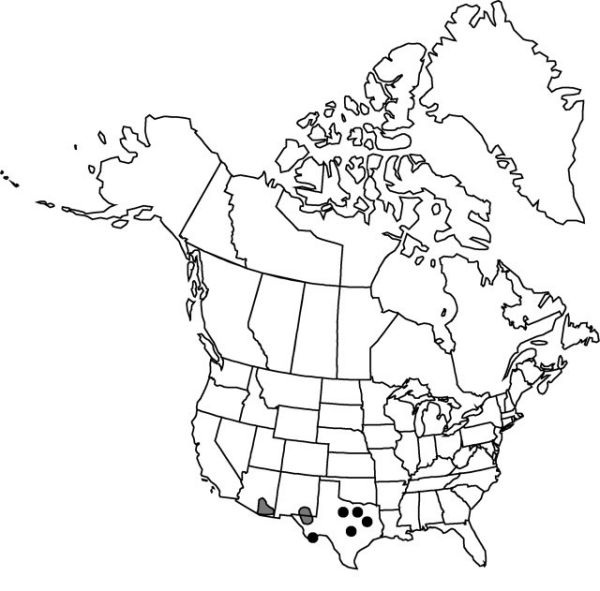Hexalectris spicata var. arizonica
Lindleyana 8: 122. 1993.
Stems pinkish red, pale pink-yellow, or pink-white, 15–70 cm; sheathing bracts 3–5. Flowers cleistogamous or chasmogamous, apparently autogamous; sepals and petals usually not apically recurved on chasmogamous flowers, yellow-tan, pinkish, redbrown, or purple-brown with dull magenta, faint pink-brown to purple-brown veins, margins pale; dorsal sepal lanceolate to oblong, 15–18 × 2.7–4.5 mm; lateral sepals 13–15 × 4–7 mm; petals 14–16 × 4–5 mm; lip 12–14.5 × 10–12 mm, white or creamy white with darkly colored veins and paler margin; lamellae central, pale, 0.2–0.7 mm; column 11–14 mm; rostellum absent; anthers whitish. Capsules 16–25 × 8–15 mm.
Phenology: Flowering May–Aug.
Habitat: In organic mesic to dry soil over limestone or sandstone, in juniper, pine, and oak woodlands
Elevation: 100–600 m (c Tex.), 1600–2000 m (west)
Distribution

Ariz., N.Mex., Tex., Mexico
Discussion
This autogamous and florally reduced segregate of Hexalectris spicata has been thought to be of hybrid origin, derived either from H. spicata var. spicata and H. nitida, or less likely from the former taxon and H. revoluta (P. M. Catling and V. S. Engel 1993). In Texas this plant tends to begin flowering later than the typical variety, from June and July (P. M. Catling and V. S. Engel 1993), as it does in Arizona and New Mexico, where it flowers in July and August (R. A. Coleman).
Selected References
None.